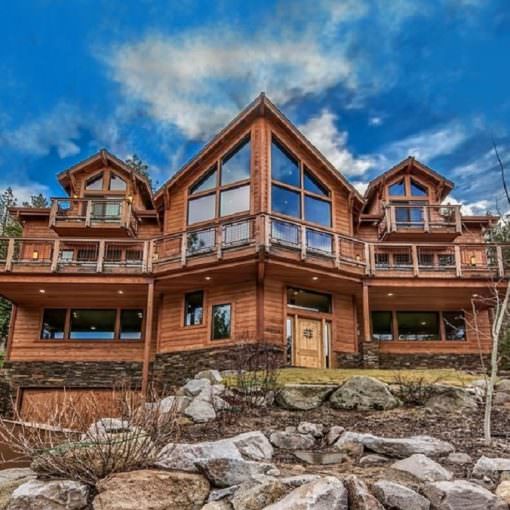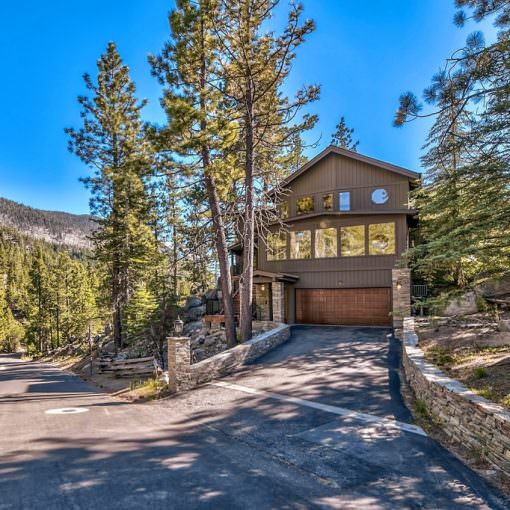What is Land Coverage? How does it affect the ability to build in Lake Tahoe?
 Many of our clients have asked questions about building in Lake Tahoe. Put simply, it is a complicated process and there are restrictions that are unique to our area. But having an agent on your side who is familiar with the rules and regulations can make the process much simpler and easier to understand. Here are some basics to get you informed and help you make the right decisions for building on vacant land or adding onto a current home in Lake Tahoe.
Many of our clients have asked questions about building in Lake Tahoe. Put simply, it is a complicated process and there are restrictions that are unique to our area. But having an agent on your side who is familiar with the rules and regulations can make the process much simpler and easier to understand. Here are some basics to get you informed and help you make the right decisions for building on vacant land or adding onto a current home in Lake Tahoe.
TRPA – Where do the restrictions come from?
More than a hundred years ago, conservationists voiced concern about the impacts of tourism, ranching, and logging on the Lake Tahoe environment. Conservationists continued lobbying for environmental protection as logging and ranching waned, ski resorts expanded, and Stateline casinos went high-rise. Outrage sparked action and the governors and lawmakers in California and Nevada approved a bi-state compact that created a regional planning agency to oversee development at Lake Tahoe. In 1969, the United States Congress ratified the agreement and created the Tahoe Regional Planning Agency.
The Compact, as revised in 1980, gave TRPA authority to adopt environmental quality standards, called thresholds, and to enforce ordinances designed to achieve the thresholds. The TRPA Governing Board adopted the thresholds in 1982. In 2013, California and Nevada passed legislation to update the Bi-State Compact.
TRPA was the first bi-state regional environmental planning agency in the country. Preservation of the environment is a cause that is now widely supported by both residents and visitors to the Lake Tahoe Region.
Land Coverage – Restrictions for Building
Land coverage is an essential element of the TRPA’s environmental plan to protect Lake Tahoe. Permanent land disturbance is most commonly measured in terms of land coverage, also called impervious surface. Basically, land coverage is anything that stops a raindrop from hitting a man-made structure instead of the dirt. It is what ground is “covered” on the lot, and includes all man-made structures such as homes, driveways, and parking lots.
Standing on your property, coverage may not seem to have an impact, but taking a bird’s eye view of our neighborhoods and towns, the coverage adds up. Maintaining open space and limiting the amount of impervious surfaces in a watershed is a proven method for improving water quality.
How much land coverage you are allowed is determined by the soil type, either through a TRPA Site Assessment or an Individual Parcel Evaluation System score (IPES). Most vacant lots already have an IPES score assigned to them, and can be searched on the TRPA website HERE. For lots with structures already present, you will need to do a little more research to find out what the land capability is before getting an idea of what land coverage is available.
There is a base allowable coverage (coverage assigned to the property) as well as a maximum allowable coverage (maximum coverage a property may have pursuant to land coverage transfers). Whichever of those is greater will tell you the percentage of coverage that may occupy the parcel. So if the lot has 1500 sqft of coverage allowed, but the maximum allowed for that size parcel is 2500 sqft, you could transfer the additional 1000 sqft of coverage to the lot. Land coverage can be transferred from another lot within the same area, or from the California Tahoe Conservancy Land Bank.
CLICK HERE to view an info sheet on Land Coverage from the TRPA.
Land Coverage Exemptions – Adding on to your property
For those homes that are already built, there are some different rules. The same maximum coverage rules apply. But you will need to get a site assessment from the TRPA or local jurisdiction in order to know exactly how much land coverage is left available on your lot (after calculating the current structures coverage). The good news is that recently the TRPA has loosened it’s regulations for some structures which allow more freedom for home owners. These exemptions include the following:
- Sheds & Greenhouses
- Pervious Driveways
- Pervious Decks
- Overhang Allowances for Roofs & Decks
To read more information and view the exemption worksheet, CLICK HERE.
What does this all mean?
First, you should talk to OUR TEAM to begin. We can give you vital information and specific data for the parcel you are interested in. Second, you need to realize that there is not “one answer that fits all”, and each property is unique. Third, there are special rules for projects that are for affordable housing and others that are beneficial to the community.





